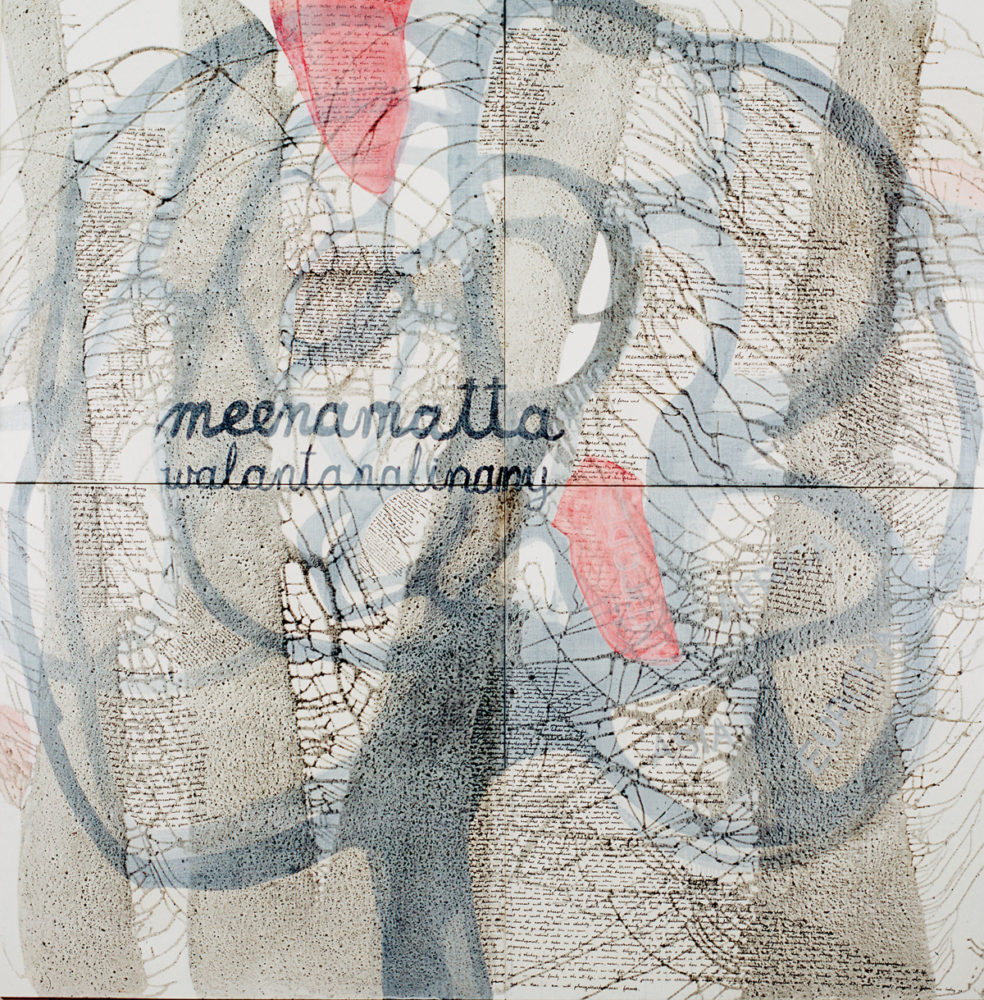
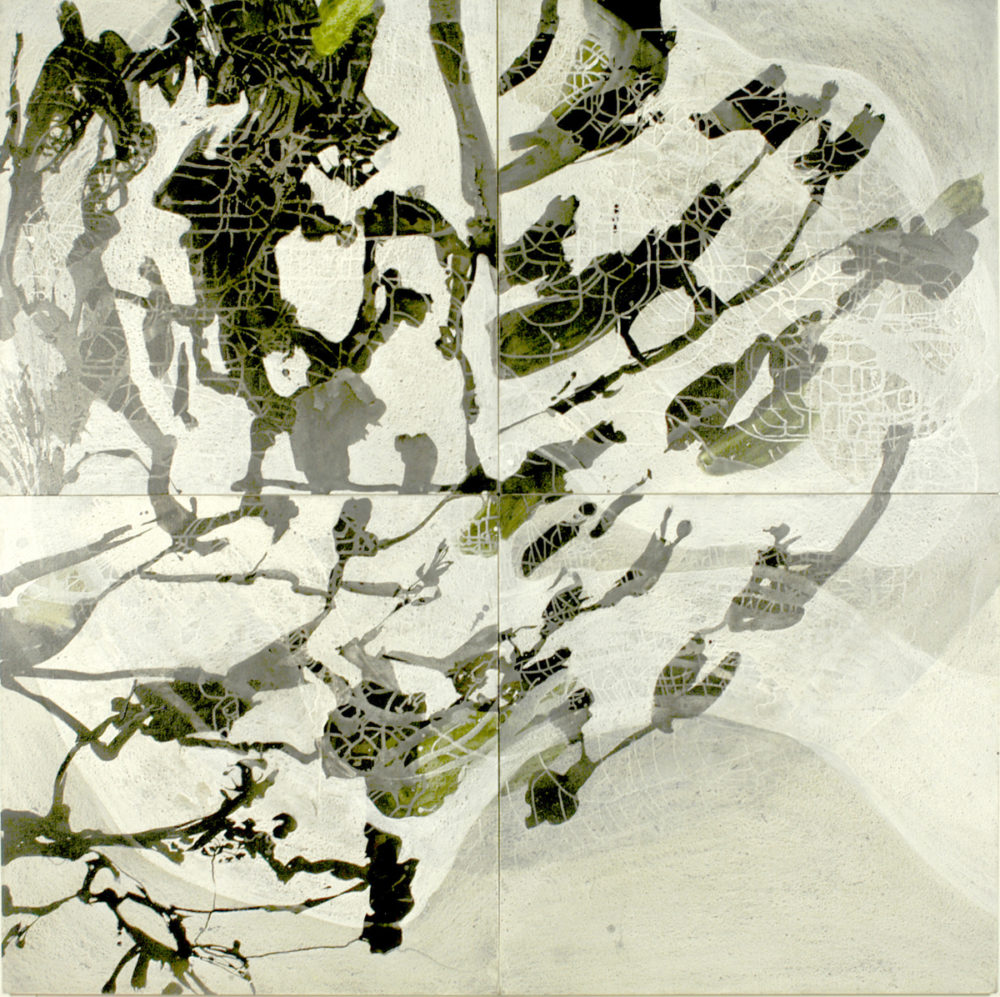
meenamatta lena narla puellakanny (Meenamatta Water Country Discussion)
Jonathan Kimberley & puralia meenamatta Jim Everett
Bett Gallery Hobart, Tasmania. 2006
Devonport Regional Gallery, Tasmania. 2007.
meenamatta lena narla puellakanny (Meenamatta Water Country Discussion) is the first in a series of durational transdisciplinary painting<>writing collaborative projects, conceived and developed on meenamatta country over a period of 3 years, in north eastern lutruwita (Tasmania) between 2004 – 2006.
All of our work together is One work.
“We have long described our ongoing collaborative praxis and working relationship as Oneness.“
– Jonathan Kimberley & puralia meenamatta Jim Everett.
Australian cultural theorist, Peter Minter writes about our ongoing collaboration in his essay titled, Transcultural Ecopoetics and Decoloniality in meenamatta lena narla puellakanny : Meenamatta Water Country Discussion (2021),
“I wish to draw attention to the extraordinary liberatory potential of puralia and jonathan’s collaboration, how working together as “ONE” they develop a structurally unique “in-between” third space which not only produces “painting-writings” from the artists’ “shared identity” as One, but also therefore functions to displace the coloniality of western modes of modernism and postmodernism as they appear in Australia.”[1]
– Peter Minter (2021).
Whilst meenamatta lena narla puellakanny (Meenamatta Water Country Discussion) was developed over 3 years (2014-2016), the work and the discussion is atemporal and inseparable from our overall and ongoing collaborative praxis. We are guided by meenamatta country.
in the time of living origin
in the time of living origin
when time was no time
to live today as yesterday
in the concept of water
in its metaphor of timelessness
its body has been with all time
forever past in the present
time is endless for water
as with it time cannot be
spaced before time began
locating itself in timeless
forever gone yet here in future
touching in spirits of old
lest it becomes the feeling
in churches that have claims
of ownership for man as god
to please a self interest power
breaking water until living things
can no longer survive the new
order of possessing water’s spirit
puralia meenamatta Jim Everett & Jonathan Kimberley (2006).
Artists Book | the full painting<>writing collaboration | Click Below
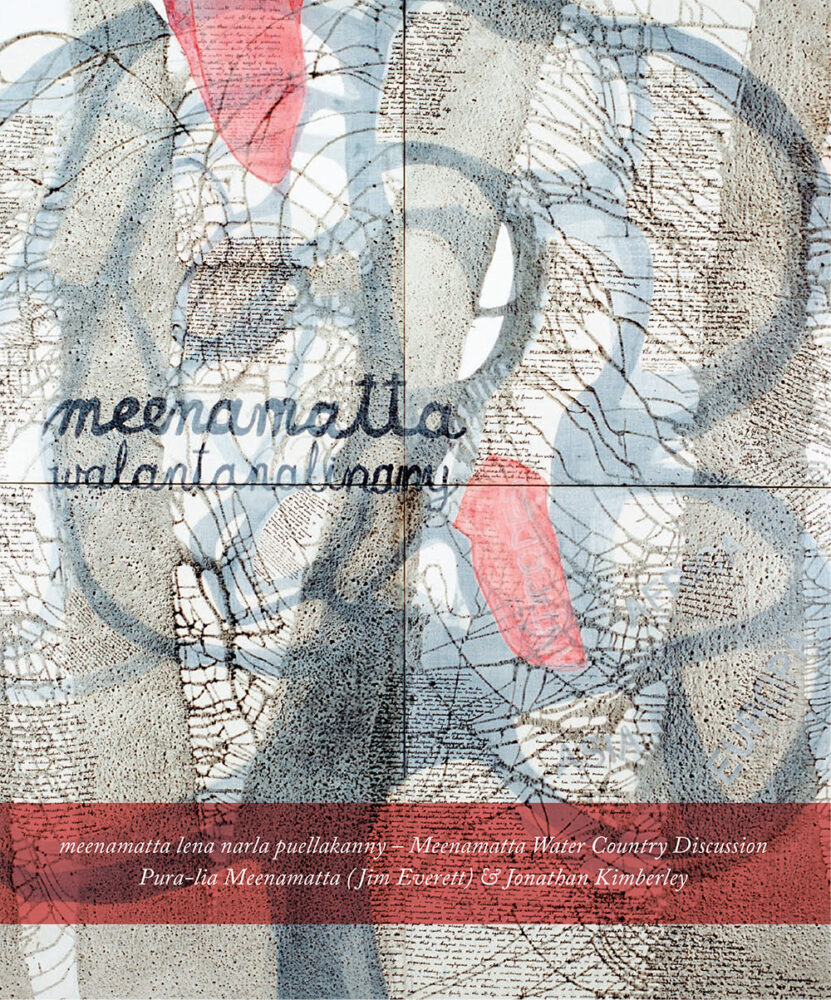
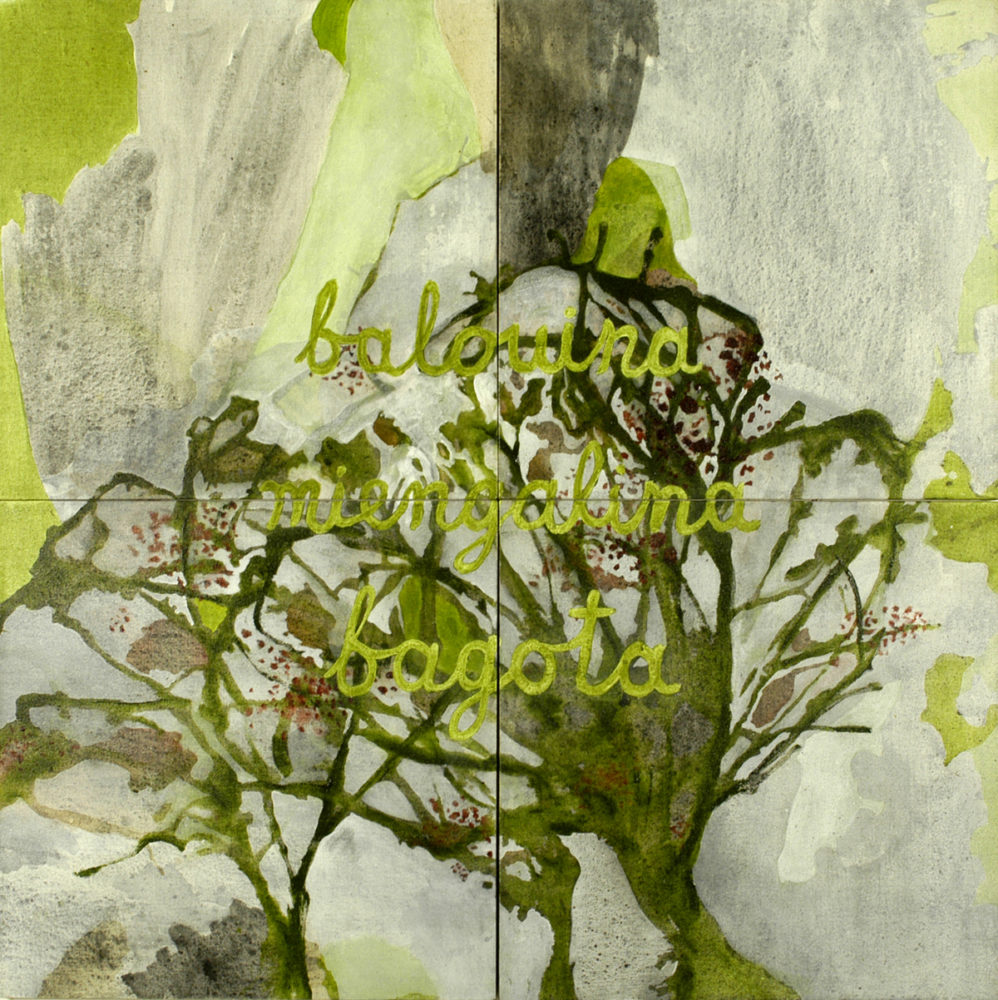
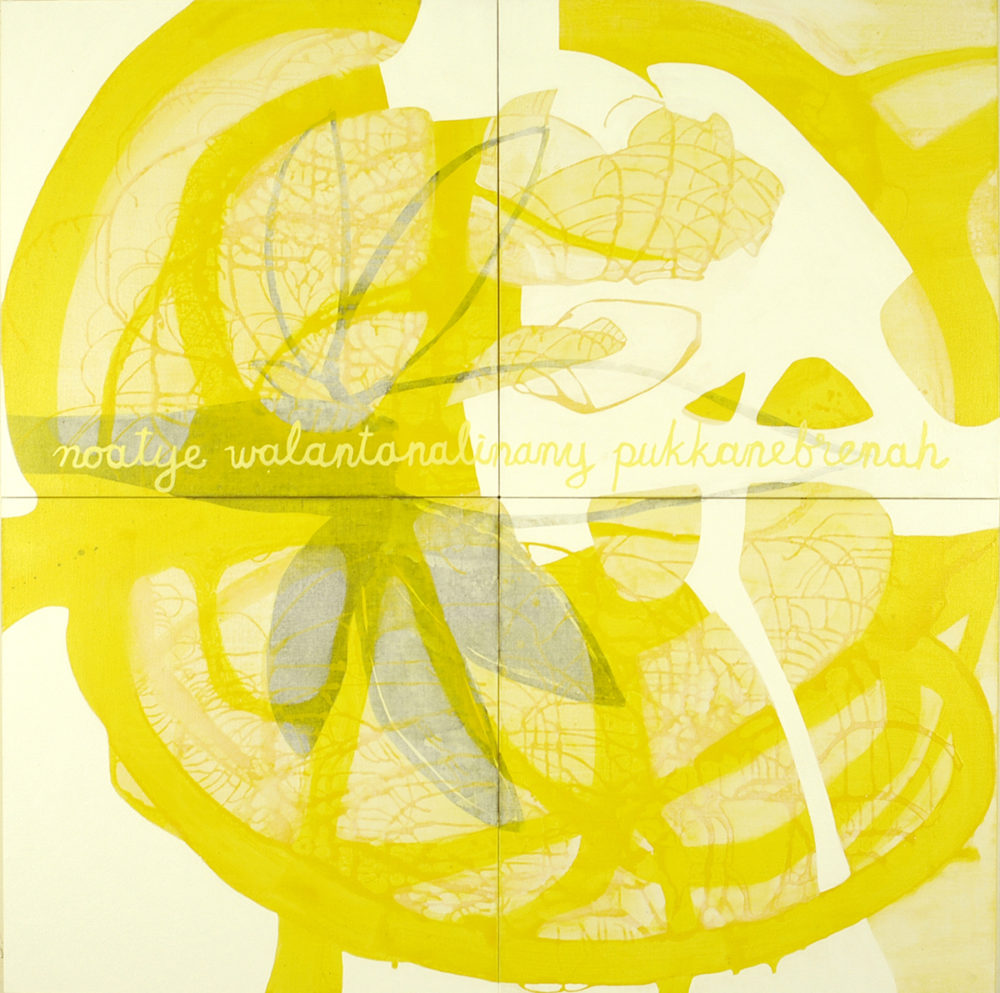
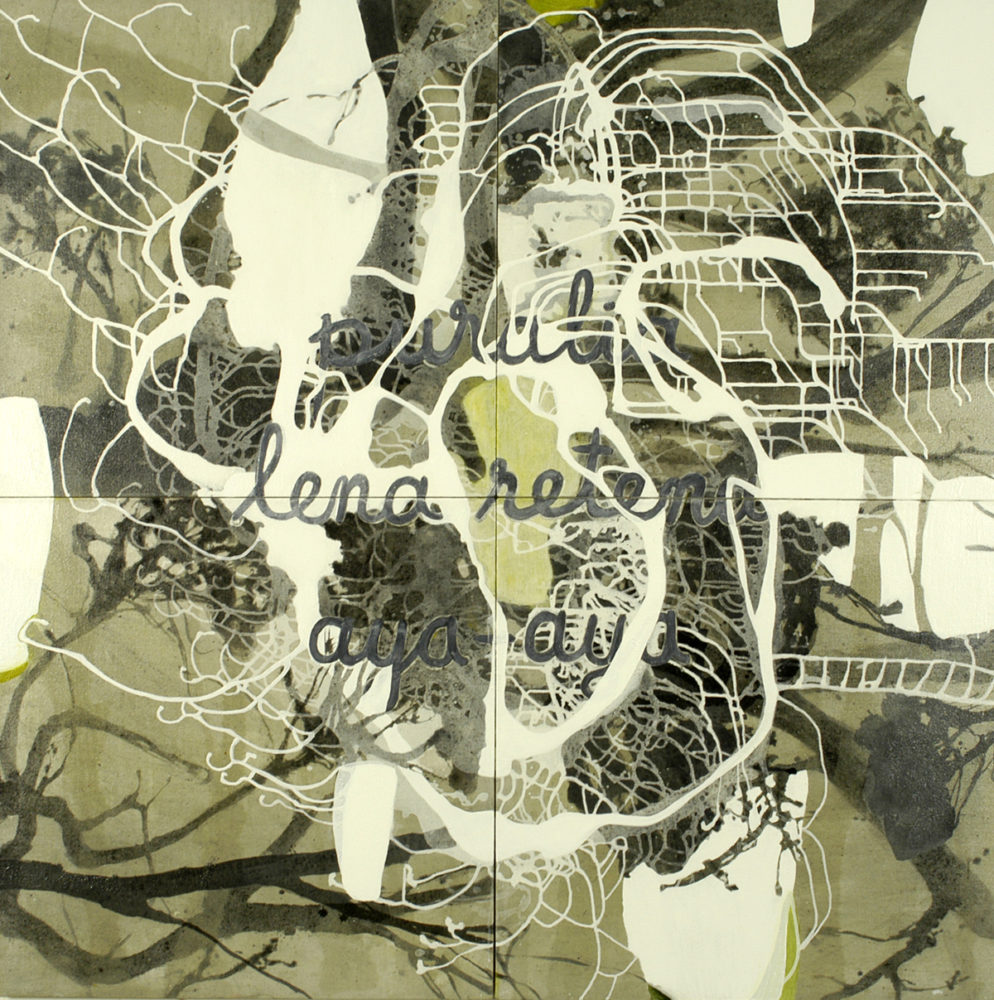
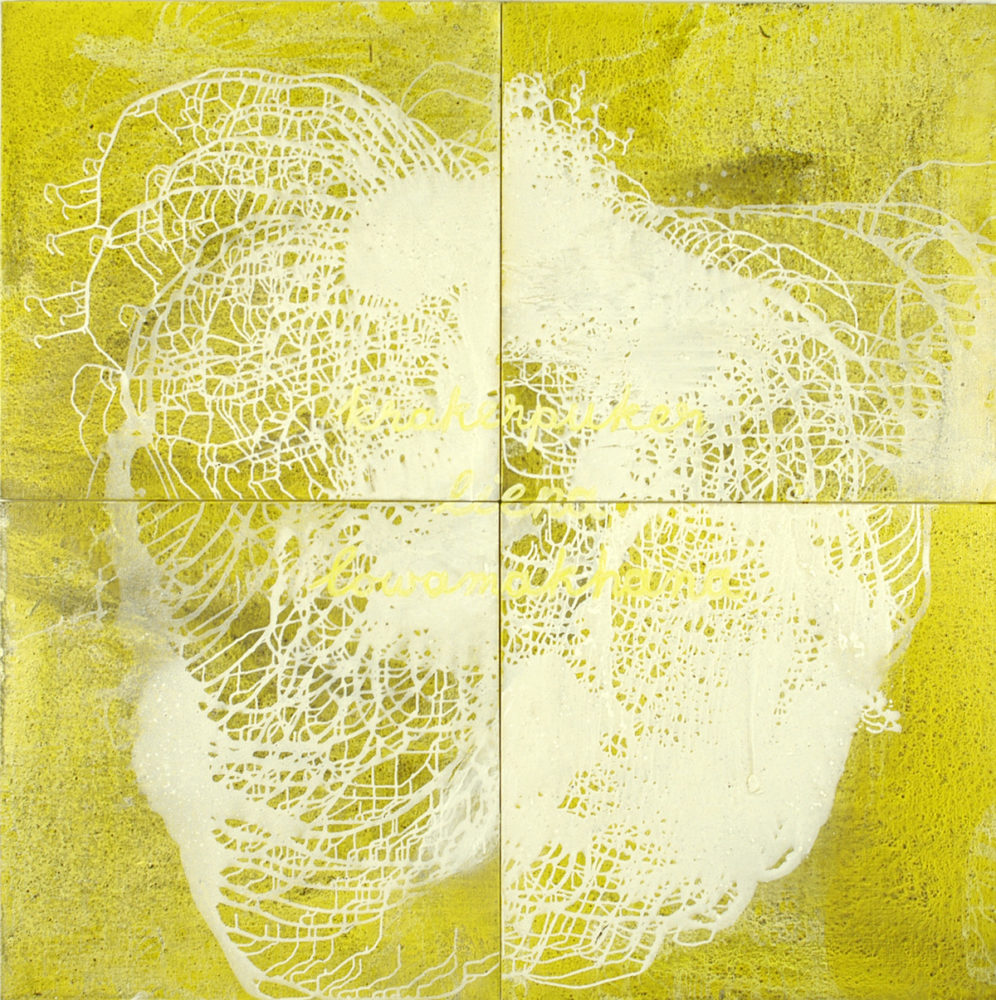

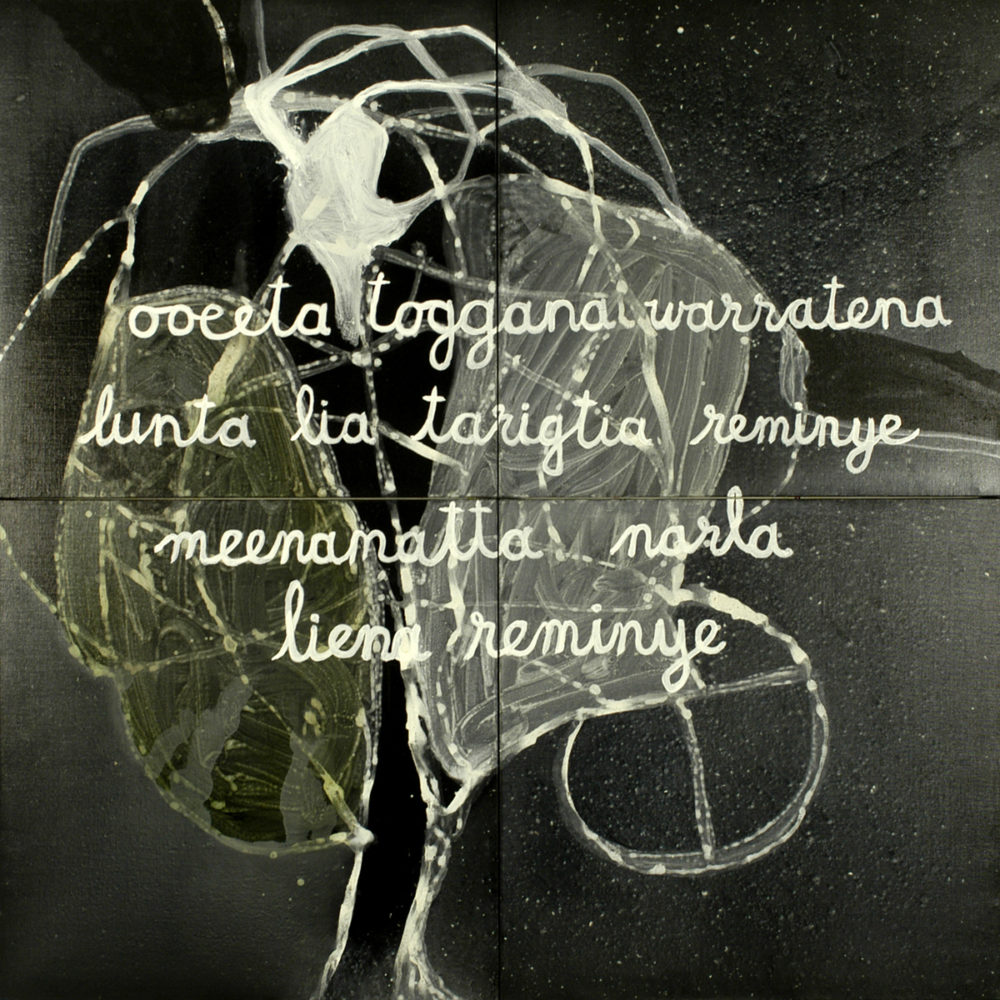
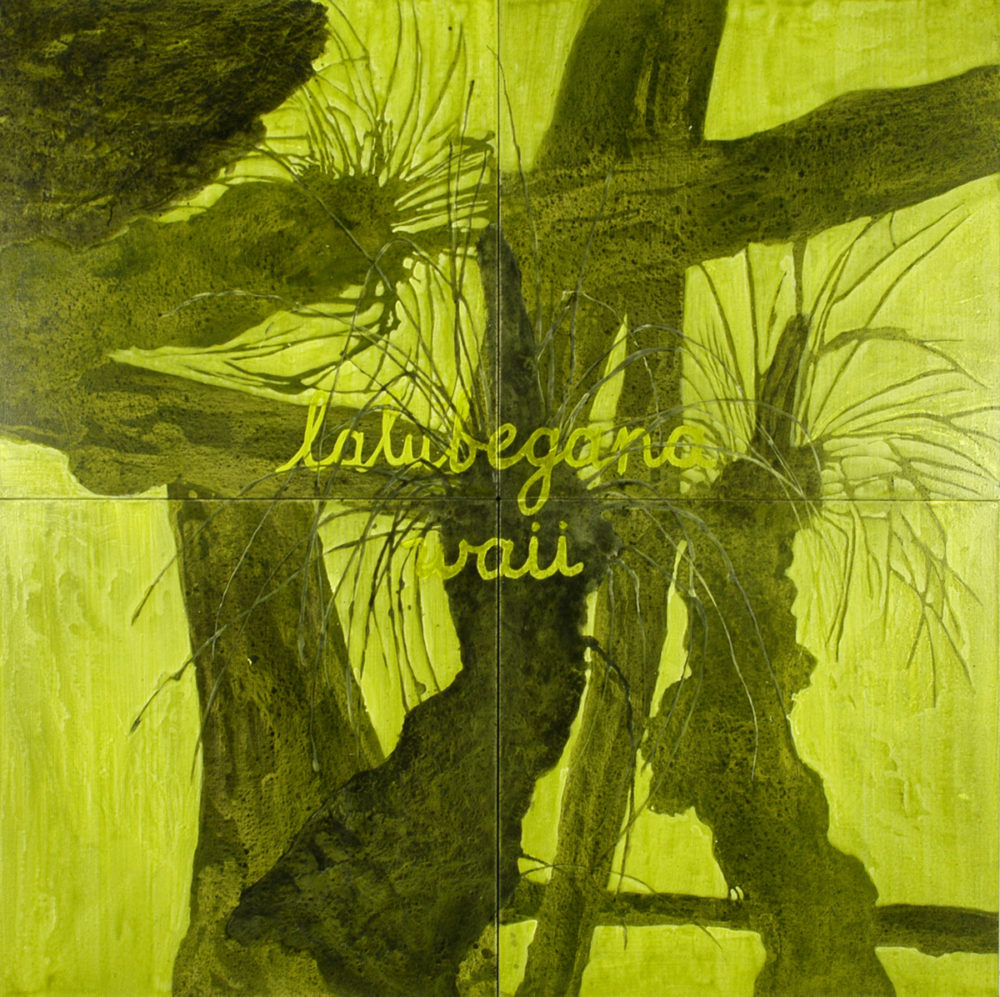
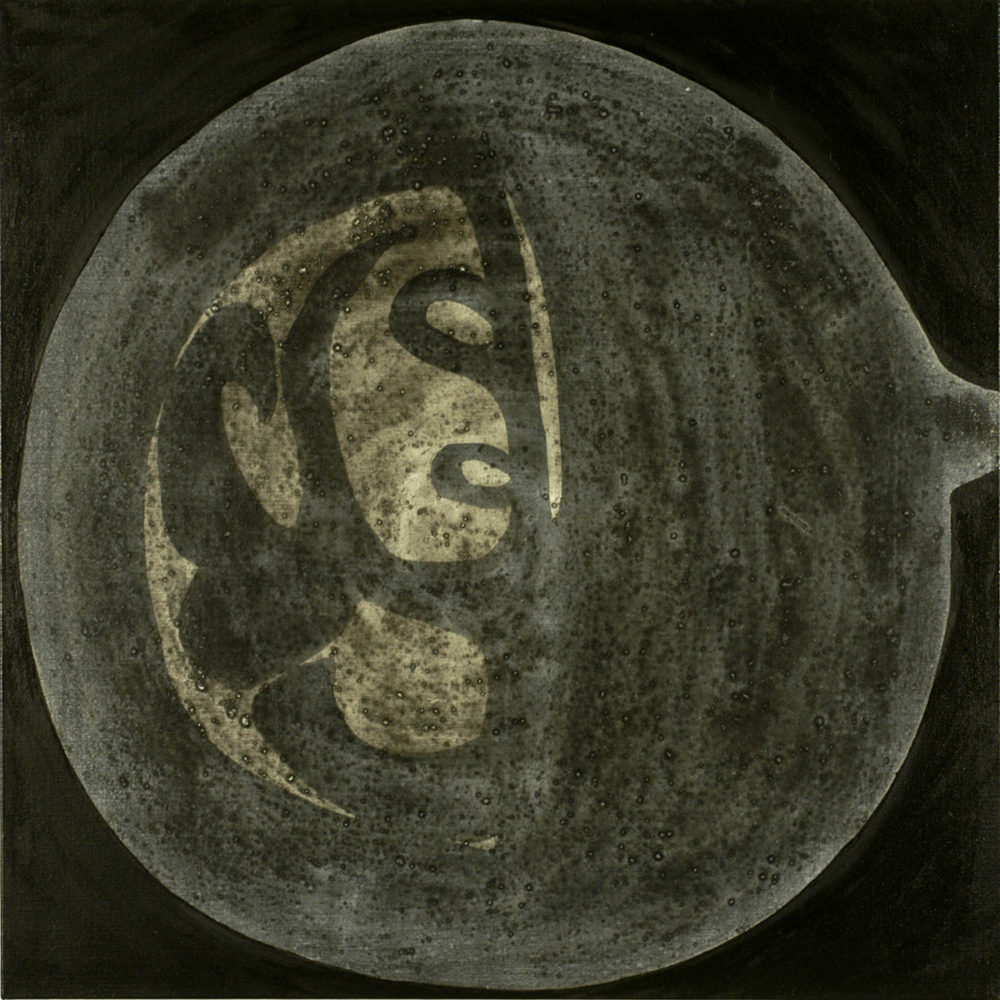
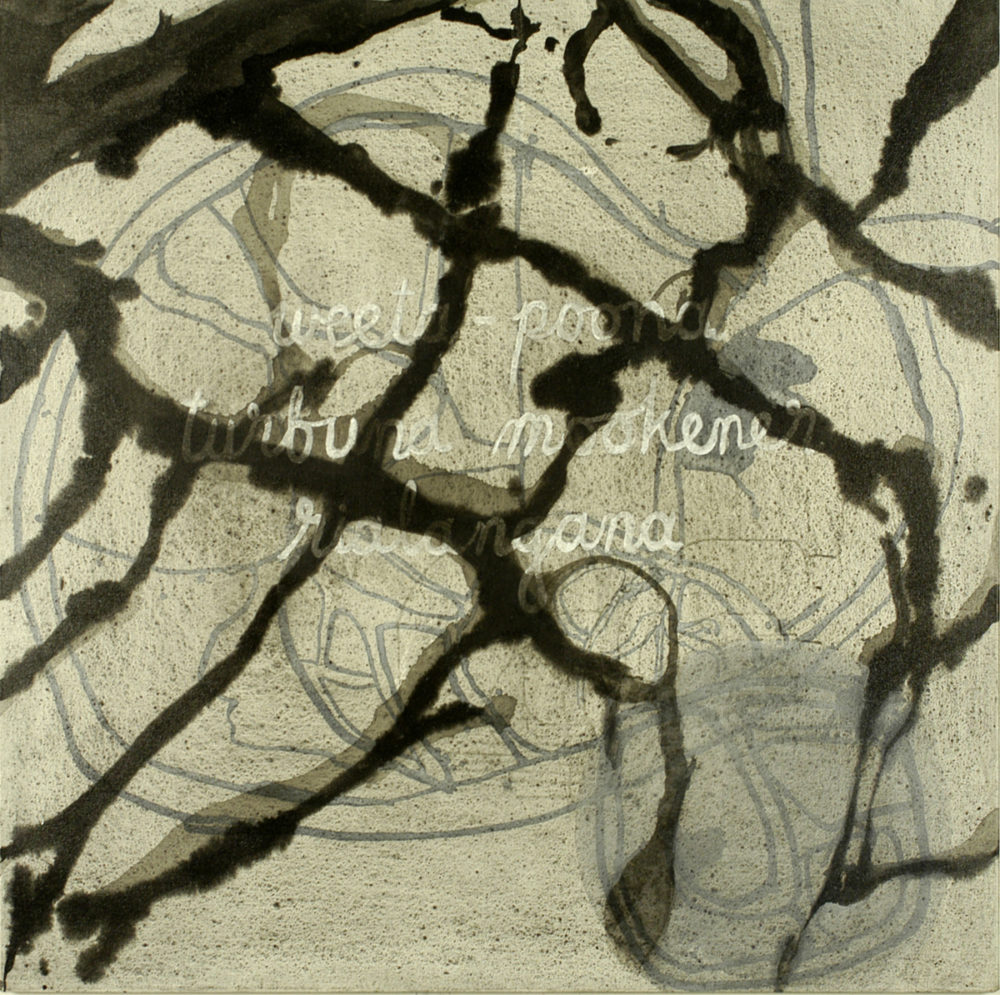
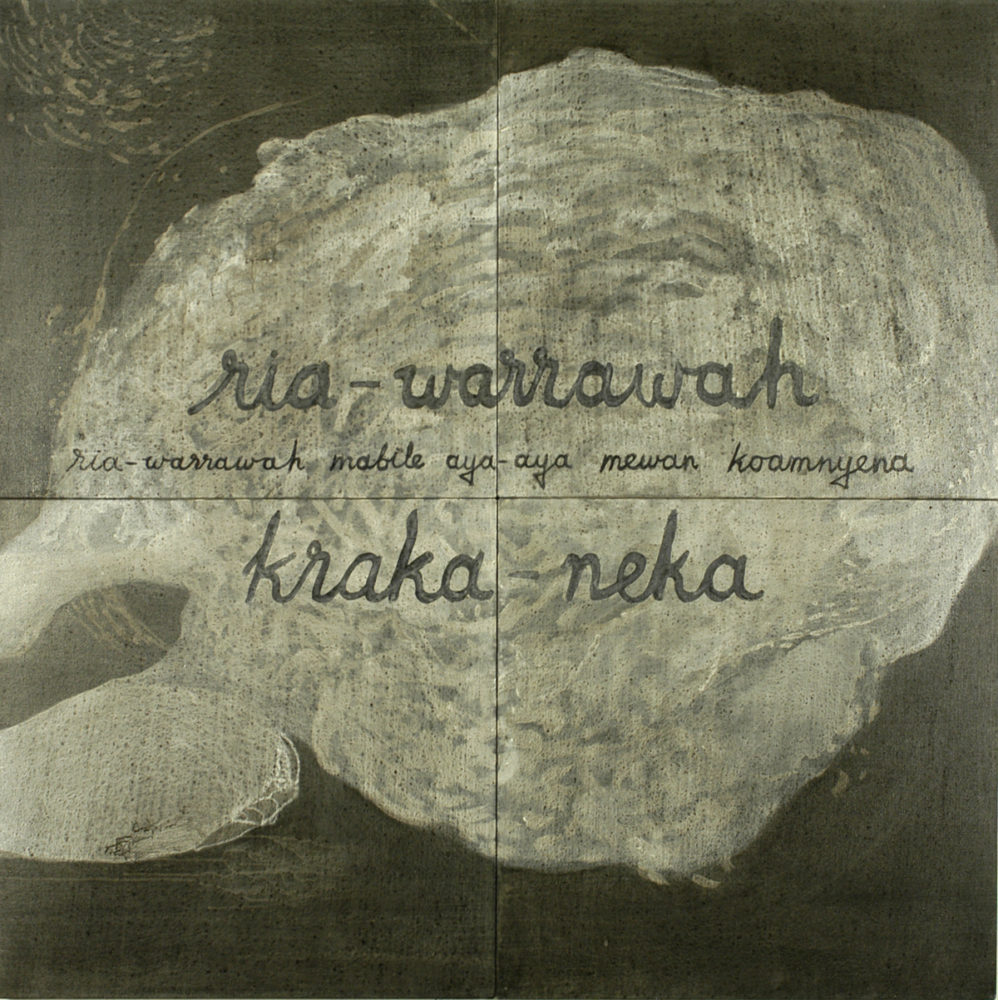
© Jonathan Kimberley & puralia meenamatta Jim Everett (2006).
Special Thanks: Gloria Andrews meenamatta country, lutruwita (Tasmania).
[ii] Authors Note: Oneness is the recognition that all cultural diversity and individuality are inseparable from the world as a whole. Oneness articulates the spatiality that links us together in all our diversity.
[i] Peter Minter (2021) ‘Transcultural Ecopoetics and Decoloniality in meenamatta lena puellakanny: Meenamatta Water Country Discussion’, in Stuart Cooke & Peter Denny (Eds.) Transcultural Ecocriticism, Global, Romantic and Decolonial Perspectives, Bloomsbury Publishing U.K. / Australia, Chapter 10, 2021.
Essay by Greg Lehman, shared journeys to meenamatta land. 2006.
In the days beyond Reconciliation, the people of Tasmania have been largely left to make their own way in understanding the deep history and culture that lives in this ancient island. Many are aware that there is cultural wisdom embedded in the land, but the challenge of engaging with the two thousand generations of human culture that has come before seems, too often, to be the task of the archaeologist or historian.
This collection of work is testament that the culture of the land is anything but the realm of the technician or the scientist. For at least thirty thousand years it has been the business of ordinary people – mothers, fathers, uncles and aunts. Brothers and sisters. People who laugh and cry. Who love. Who sit in conversation – in awe of beauty and meaning – who feel the power of the land and all its life.
Jim Everett and Jonathan Kimberley have begun the task of renewing this conversation. In doing so, they are creating new threads of hope. Their discussion in text and paint is formed for those who see the future as one necessarily defined by respectful conversation and shared journeys. It is a future that emerges from the gap between old and new; between Black and White. Their journey offers an opportunity to make these dichotomies redundant and realise that such distinctions are outdated – constructions that were figured at a time when oppression and separation were necessary to support a new imperial order – what Jim calls ‘the colonial dome’.
In each of Jonathan’s paintings, we are offered a handhold; to grasp as we pull ourselves from the mire of Tasmania’s colonial past into the light of new understandings – of history, land, time and people. In these works, water is the omnipresent metaphor of endless time. This rendering embraces a culture that is realised by the business of walking the land and knowing the brethren that reside there. It is not a linear culture. It does not have beginning or end – source or destination. It simply exists in its being with the land. It is a profound articulation of home. An intrinsic home that cannot be separated from the deep human history of meenamatta clan country.
The contrast with Tasmania’s colonial identity – that has been based for the past two hundred years on a capital-obsessed passion to send seals, whales, apples, young fighting men, woodchips and creativity away to foreign shores – is stark.
‘Everything of all-life is taken to another place where no heaven can be’ (antipodes)
The ‘all-life’ in Jim’s text is homage to the country’s citizens. All living things. Not just plant and animal, but rivers, mountains and land too. All important and respected.
‘All with spiritual memories of a history and love for country reminding those who can hear its song in new worlds to bring back shared journeys on a land of blue tears.’ (blue tears in manalargenna country)
This shared journey takes us to turbuna, known by most as Ben Lomond. But instead of encountering the familiar (a reference to some far away Scottish tor), we meet with a marker of sacred country – standing as an eternal sentinel to the ceremony of men and women in meenamatta land. Time and water embrace the tribes of old days in the same way they embrace Jim’s family today, as they camp their way around a country that keeps culture alive.
‘here, I find my grandfather and grandmother, my parents, and my brothers and sisters… we are one family in the all-life, with waterlines that journey in our arteries and veins…’ (planegarrartoothenar story)
Jonathan Kimberley has journeyed over country and culture – through time itself. His imagery offers markers for a journey that more can take. To encounter imprints of land – patterns of flowing water. The movement of plant, animal, soil and air. These are earthen textures, forms and colours that begin in their discussion and now travel across canvas and text.
Jim resists the recognition that his blood countrymen bestow on him. But when we call him a senior cultural man, we raise up the memories of spirit men from the past. tongelongeter, manalagenna, wooreddy. Jim’s life is lived in such a way that the times of these men are made great and – like the water that permeates this work – endless.
Greg Lehman 2006.